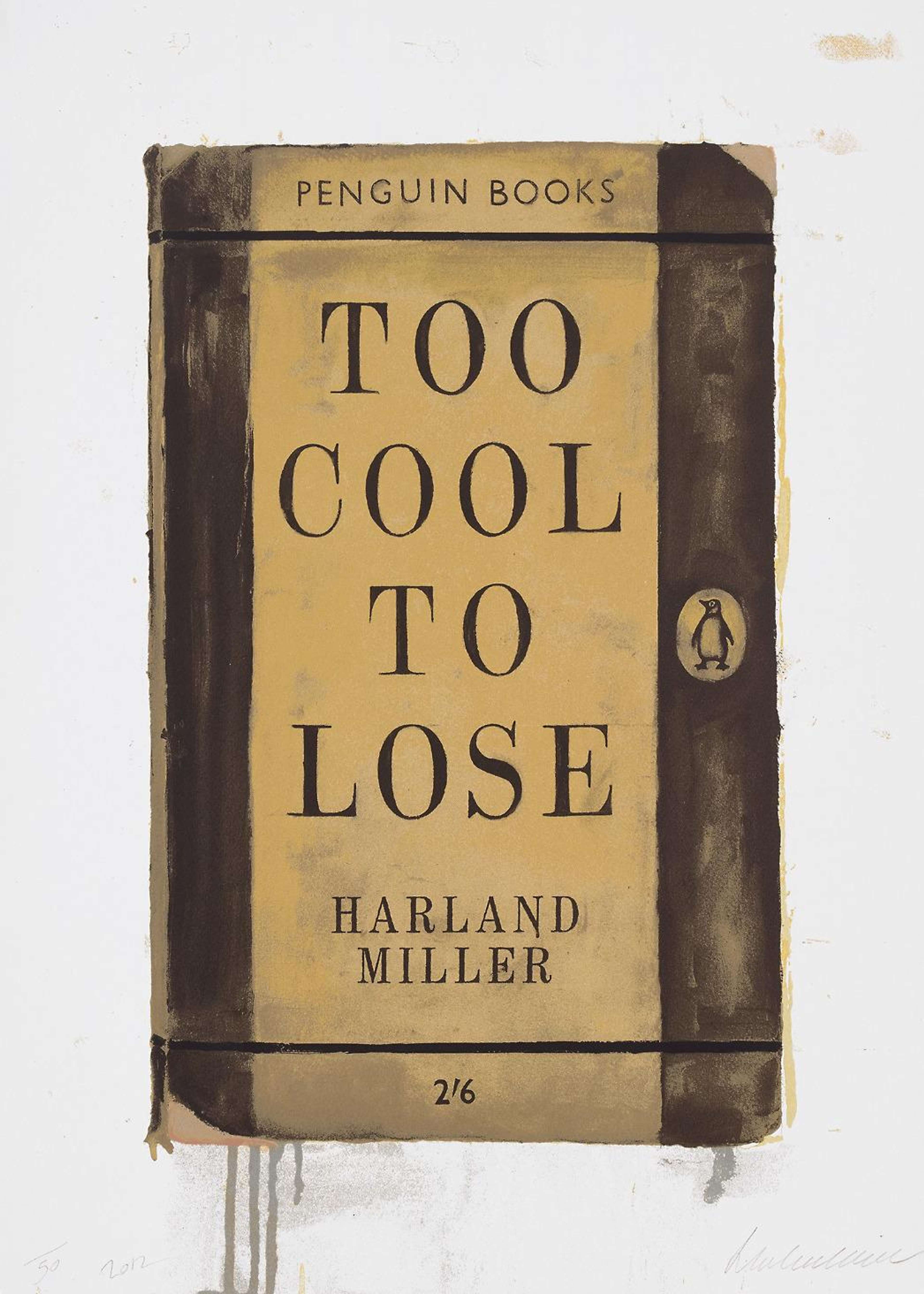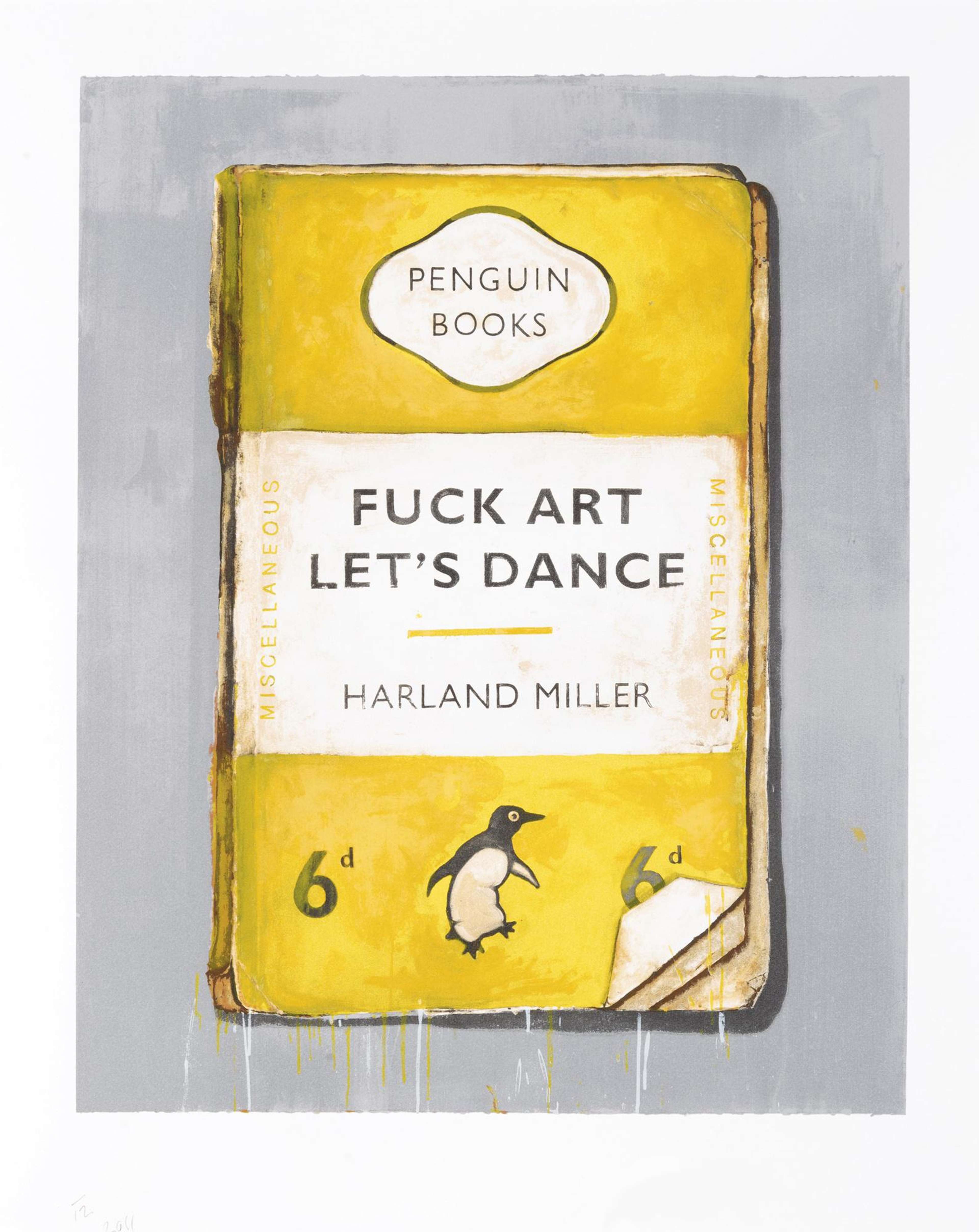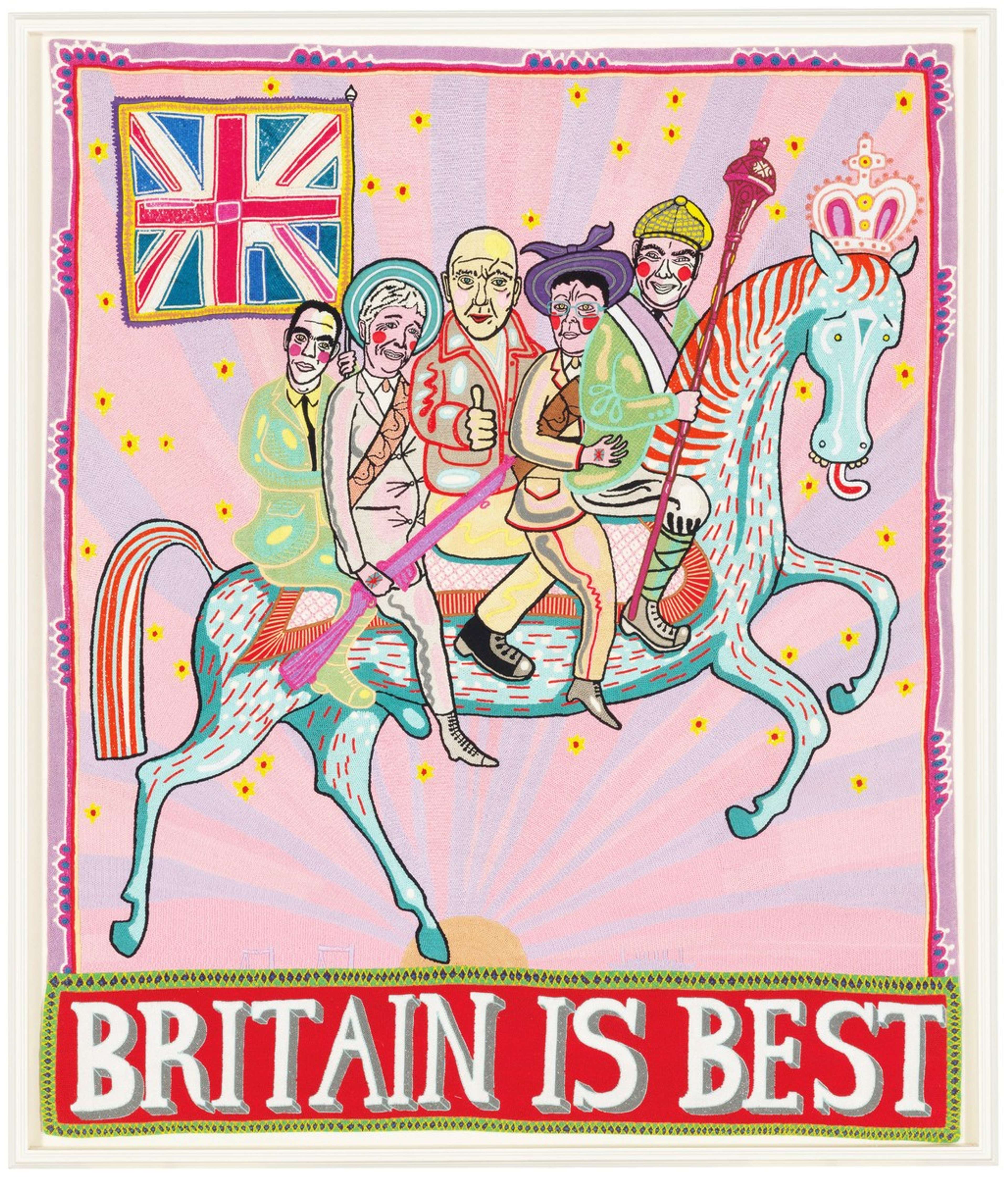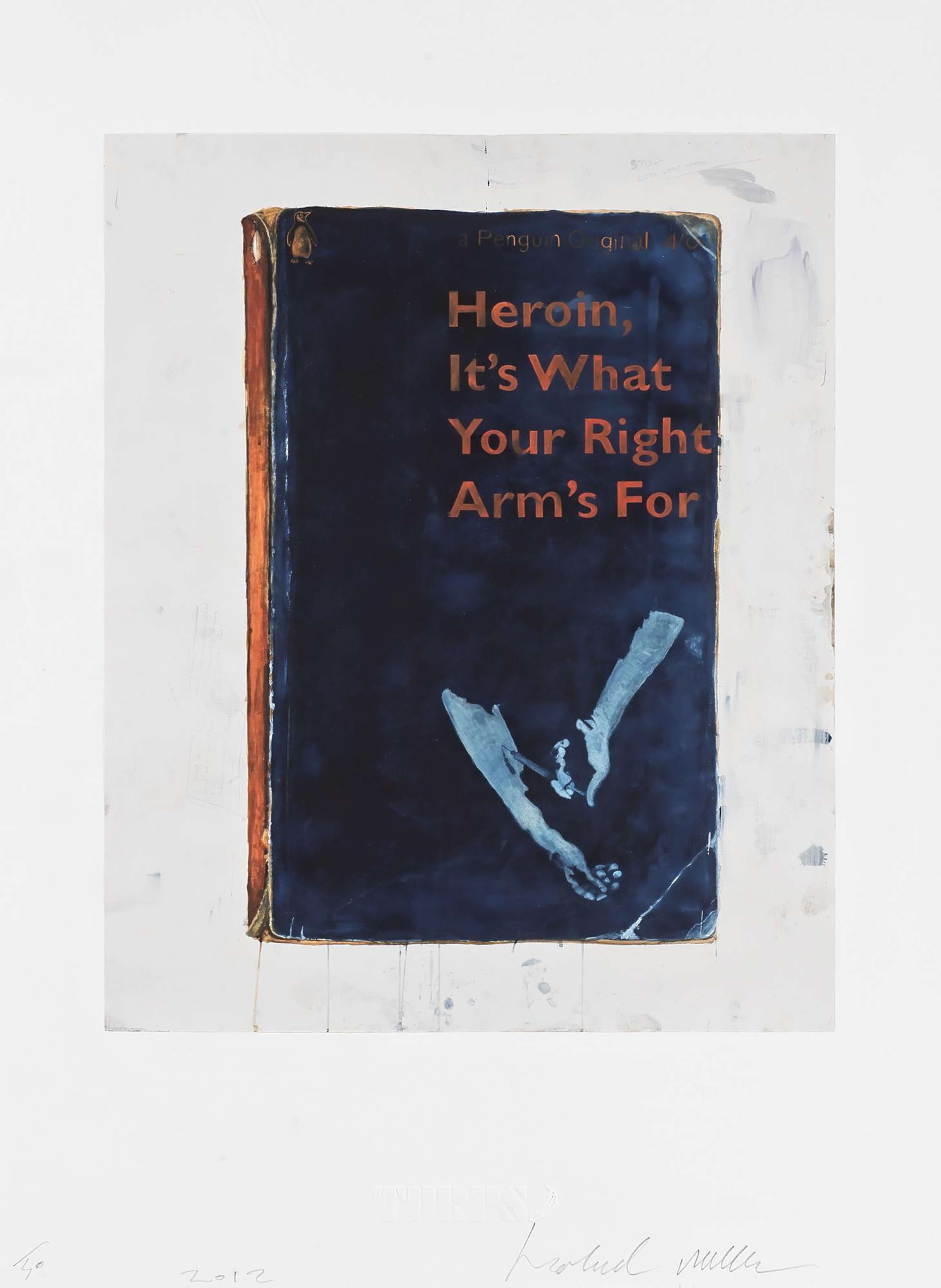Exploring Harland Miller's Unique Blend of Humour and Social Commentary

 Tonight We Make History © Harland Miller 2018
Tonight We Make History © Harland Miller 2018
Harland Miller
61 works
Key Takeaways
Harland Miller's art uniquely blends sardonic wit with sharp social commentary, using humor to highlight the contradictions of modern life. By reimagining iconic Penguin book covers with provocative, often humorous titles, Miller challenges viewers to look beyond the surface and engage with deeper societal critiques.
Harland Miller, an acclaimed contemporary artist and author, is renowned for his distinctive use of sardonic wit, to lightheartedly comment on the frequent disconnect between representation and reality. Through his art, Miller blends dark humour with sharp social commentary, creating works that resonate with audiences on multiple levels. In a world where the line between truth and fiction is increasingly blurred, Miller’s art remains a powerful reminder of the enduring role of humour and wit in navigating the complexities of modern life.
Crafting Social Commentary with Wry Humour
Sardonic Wit as a Lens for Social Critique
Miller’s art serves as a lens through which the satire and contradictions of modern society are magnified. His use of sardonic wit allows him to deliver sharp critiques, often by manipulating popular epigrams. This balance ensures that while his works elicit laughter, they also prompt deeper reflection on the societal issues they address. Through his playful yet barbed style, Miller navigates the fine line between humour and critique, using his art to highlight the paradoxes of contemporary life.
The Role of Irony and Satire
Irony and satire are central to Miller’s artistic practice. By combining humorous references with iconic Penguin book jackets and Neo-Expressionist paintings, he draws attention to the inconsistencies and paradoxes inherent in modern existence. His works often challenge viewers to look beyond the surface humour and engage with the deeper commentary embedded within. Pieces such as Don't Let The Bastards Cheer You Up (2009) and Death What’s In It For Me? (2011), invite audiences to question their preconceived notions of the text, and explore the underlying messages in his art.
Text as a Vehicle for Wit and Critique
Reimagining the Penguin Book Covers
One of Miller’s most iconic contributions to contemporary art is his reinterpretation of classic Penguin book covers. By juxtaposing familiar imagery with sardonic text, Miller creates new meanings and perspectives on well-known cultural symbols. These reimagined covers, with their bold typography and wry humour, offer a fresh take on literary nostalgia, transforming it into a vehicle for social critique. Familiar covers, when paired with Miller’s witty titles, become insightful commentaries on contemporary issues, with pieces such as Rags To Polyester (2014), Love Conquers Nothing (2011) and Gateshead Revisited (2009) commenting on consumerism, identity, and societal expectations.
Typography and Wordplay
Miller’s mastery of typography and wordplay is integral to his ability to convey humour and critique simultaneously. His use of bold, vintage fonts and humorously altered epigrams enhances the impact of his messages. The text in his artworks is not just an accompaniment to the visuals, but a central component that drives the narrative. Through witty wordplay and clever typography, Miller’s text-based art becomes a tool for delivering his social commentary, often leaving viewers both amused and contemplative.
Miller’s style has been significantly influenced by artists such as Ed Ruscha, Robert Rauschenberg and Mark Rothko, particularly in his use of text and abstract painting. In particular, Ruscha's blending of words with visual art, often incorporating humour and irony, resonates in Miller's own work. Both artists share a fascination with language and its impact on culture, using typography and bold graphics to explore themes of identity, nostalgia, and the mundane, which has become a hallmark of Miller's artistic style.
Examples of Miller’s Wry Sense of Humour in His Art
Incurable Romantic Seeks Dirty Filthy Whore
Miller's Incurable Romantic Seeks Dirty Filthy Whore series is a prime example of his wry sense of humour. By juxtaposing a refined, nostalgic book cover style with a provocative and unexpectedly crass title, Miller orchestrates a sharp contrast that is both humorous and thought-provoking. The piece plays on the absurdity of combining romantic idealism with blunt, irreverent language, reflecting Miller's ability to subvert expectations and explore the complexities of human emotions with a mix of wit and irony. This tension between ‘highbrow’ and ‘lowbrow’ elements is a hallmark of Miller's unique approach to art, and is a hallmark of Miller’s engagement with the complexities of the spoken and written word. Incurable Romantic serves to expose Miller’s literary influences, such as Ernest Hemingway, as well as the influence of Abstract Expressionism, Colour Field and Pop Art.
Tonight We Make History p.s (I Can’t Be There)
Tonight We Make History (2018) is a striking piece that exemplifies his signature blend of nostalgia, humour, and thought-provoking commentary. The artwork, styled like a vintage Penguin book cover, and featuring bold, blocky typography juxtaposing a grand, ambitious statement with a dismissive, apathetic follow-up captures Miller's knack for irony and his exploration of the gap between aspiration and reality. The piece reflects the artist's ongoing fascination with language and how it can simultaneously convey both sincerity and cynicism, making it a humorous commentary on fickleness and caprice.
Heroin, It's What Your Right Arm’s For
Miller’s Heroin, It's What Your Right Arm’s For (2012) is a provocative piece that encapsulates dark humour and a commentary on addiction. Styled as a retro book cover, the artwork combines the familiar aesthetic of old Penguin books with a shocking and irreverent title. The phrase is a blunt and unsettling reference to heroin use, playing on the idea of societal norms and personal vices. Miller’s choice to juxtapose this harsh reality with the comforting design of a book cover amplifies the impact, forcing viewers to confront the disturbing yet often ignored aspects of addiction. Through this work, Miller explores the tension between appearance and underlying truths, using humour to provoke thought and challenge perceptions.
Themes of Alienation
Humour as a Response to Alienation
Miller often addresses themes of alienation and detachment in contemporary society throughout his oeuvre. His works explore the sense of disconnection that many people feel in the modern world, using humour as a coping mechanism and distraction. By injecting wit into these serious themes, Miller not only makes them more accessible, but also highlights the absurdity of the human condition. His art serves as a reminder that humour can be a powerful tool for navigating the complexities of modern life.
Miller’s unique blend of sardonic wit, dark humour, and insightful social commentary has solidified his place as a distinctive voice in contemporary art. Through his clever use of irony, satire, and text, Miller crafts works that are as thought-provoking as they are entertaining. His reinterpretations of iconic Penguin book covers, paired with wry, often provocative titles, invite viewers to engage with the contradictions and absurdities of modern life. Miller's art resonates deeply because it captures the tension between appearance and reality, aspiration and cynicism, humour and critique. By addressing themes of alienation, consumerism, and the complexities of human emotions, his work reflects the multifaceted nature of contemporary existence. His ability to balance humour with serious commentary ensures that his art not only entertains but also prompts deeper reflection on the societal issues we face today.








